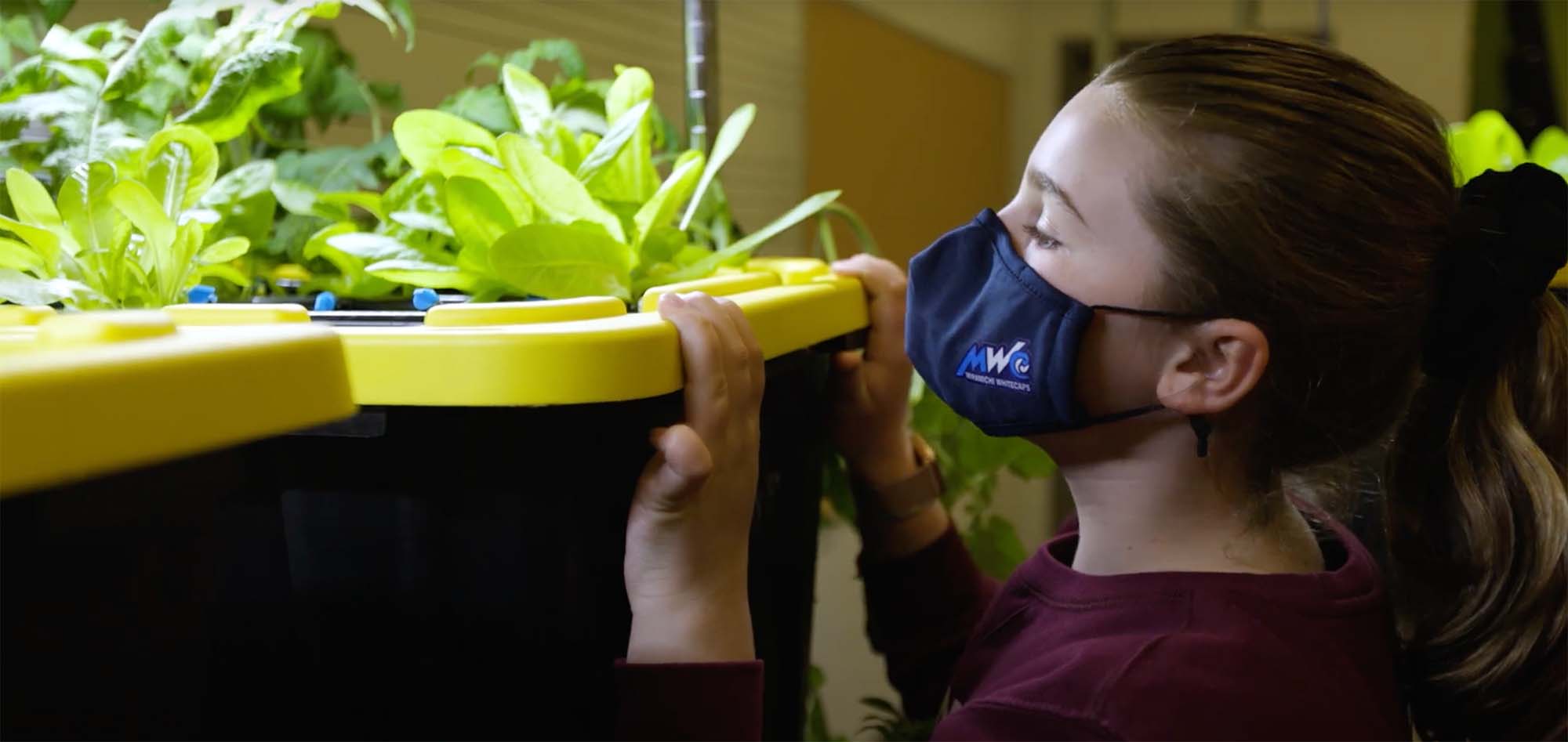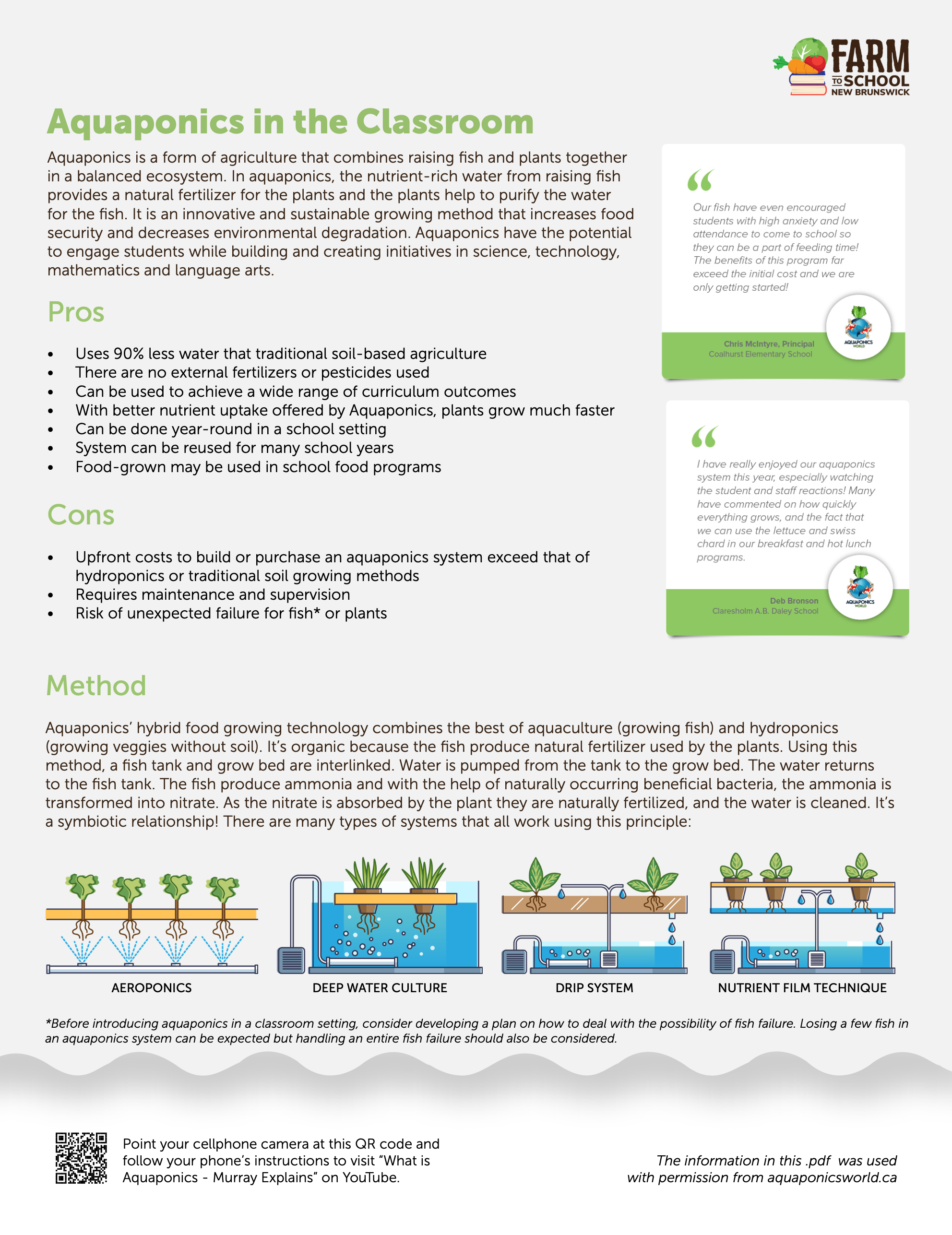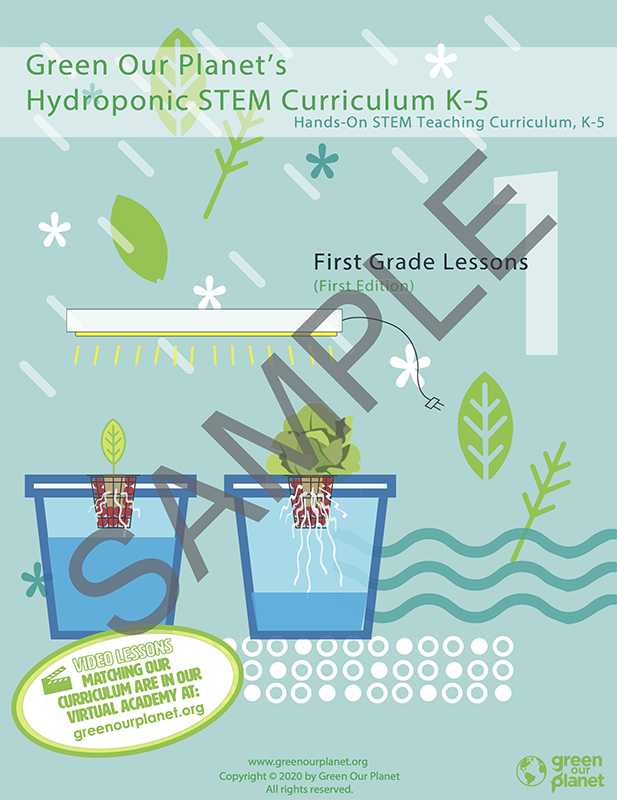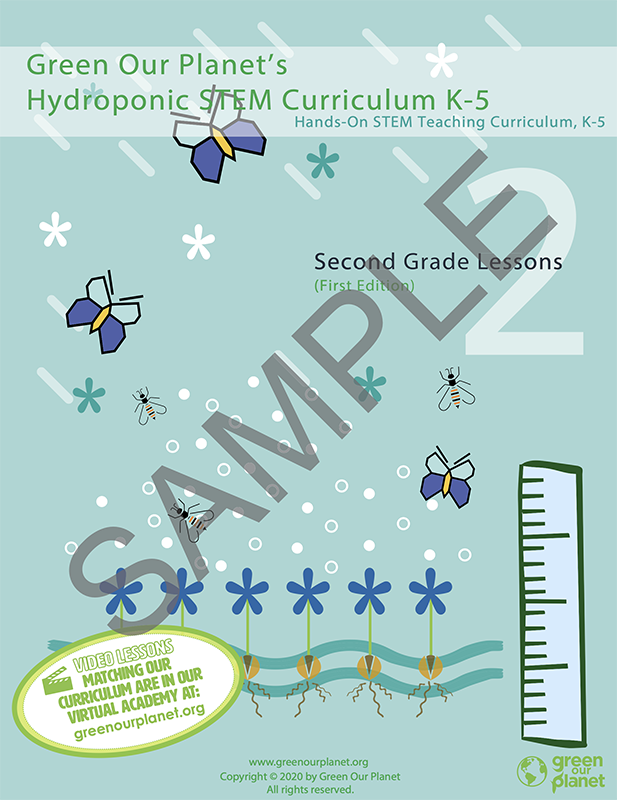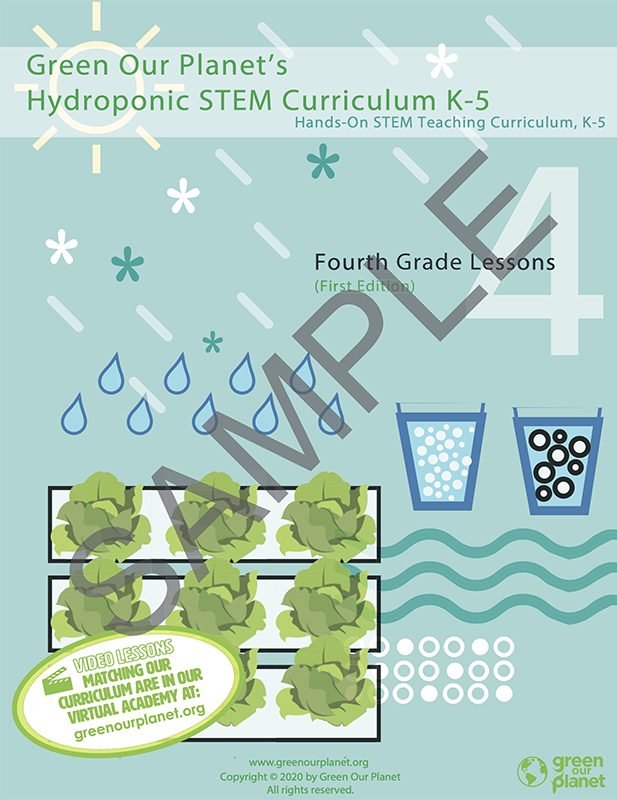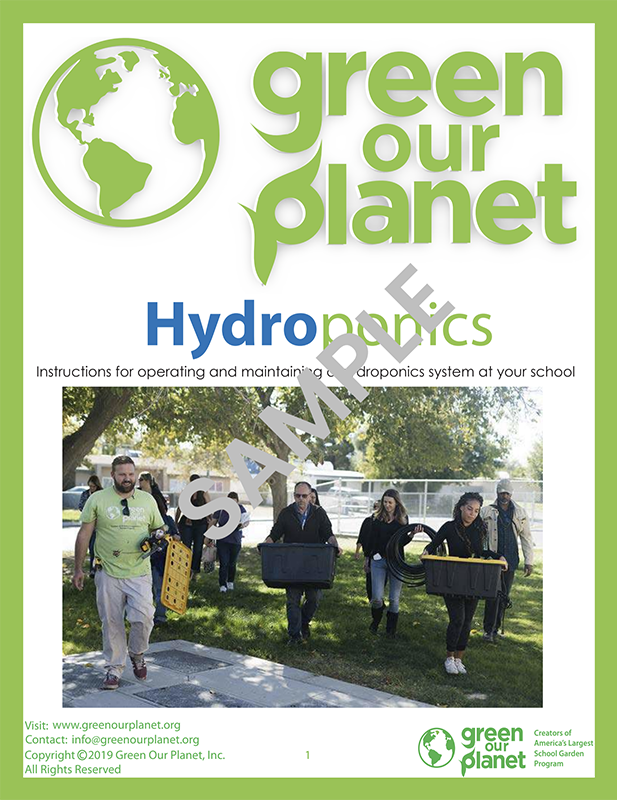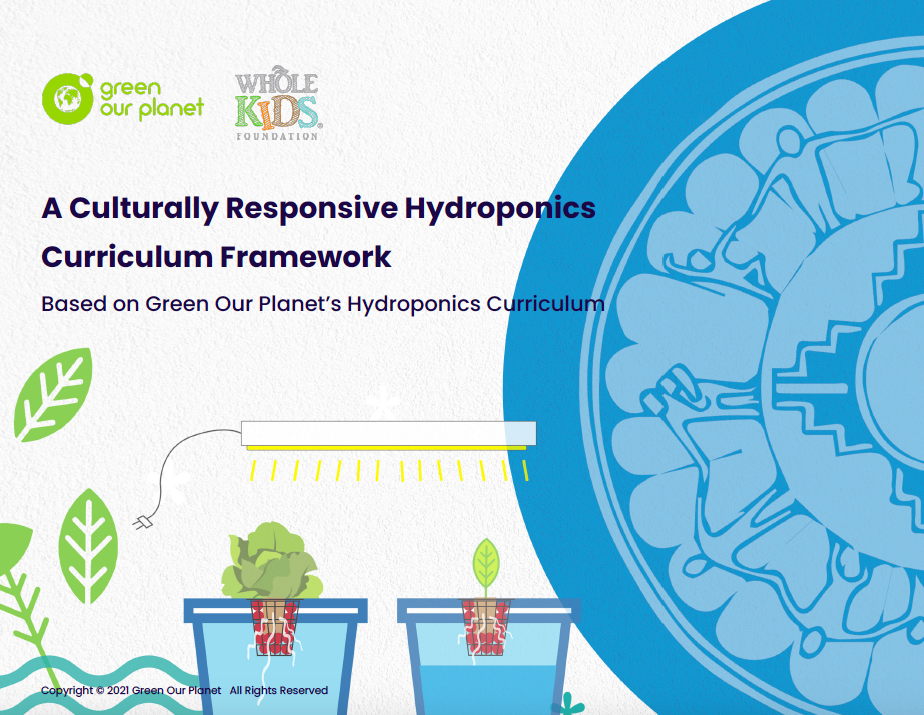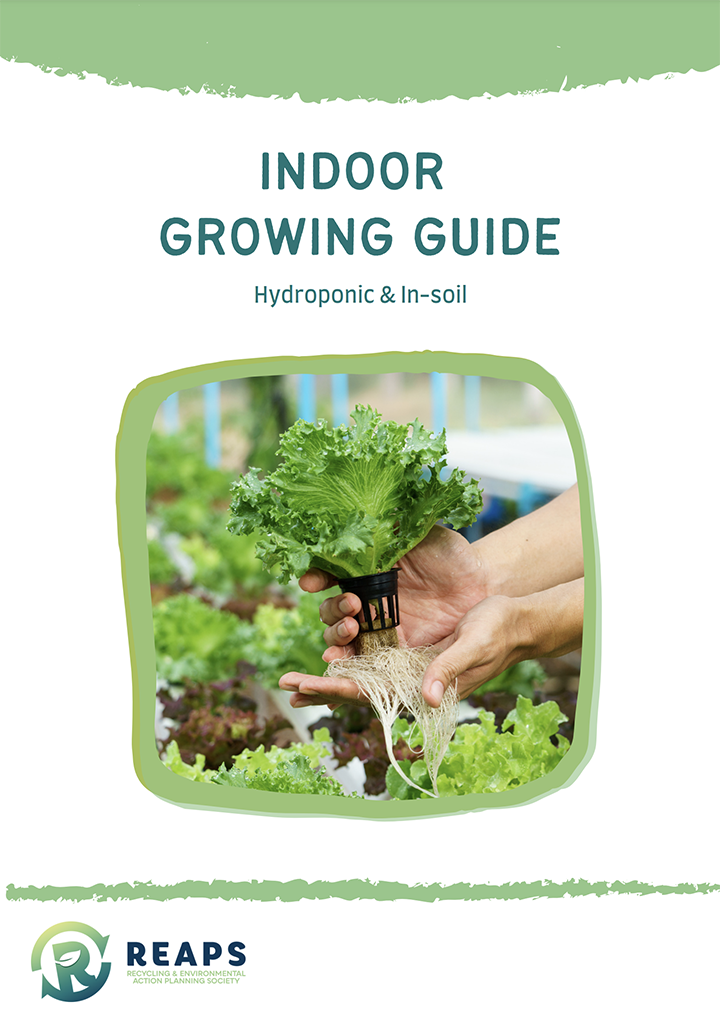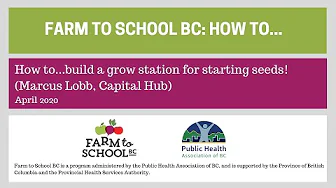Hydroponics systems are more popular than ever as a teaching tool in schools. With short growing seasons in many areas of Canada, hydroponics systems allow students to engage in experiential learning, year-round. In this blog post, we’ll equip you with the tools and resources you need to decide if hydroponics is right for your classroom or school.
What is a hydroponics system?
Did you know you can grow plants without soil? Hydroponic systems rely on a nutrient-rich liquid and growing medium in lieu of soil – usually this means water and a few drops of a mineral nutrient solution. Hydroponics systems are available for purchase in various sizes or you can incorporate even more STEM curriculum and DIY them! They can be a great option for growing in areas where there are temperature extremes, the growing season is short or space is limited.
Why schools may wish to start a hydroponics program
- Hydroponic gardening introduces science and STEM concepts, healthy eating and food security with an interactive and hands-on approach.
- Since hydroponic gardens are typically indoor systems, they are perfect for schools that can’t grow plants outside in the winter.
- If a vertical growing system is used, more plants can be grown in less space.
- Nutrients can efficiently be replenished with an affordable, easy-to-store mineral nutrient solution.
- Plants grown using hydroponics have the potential to grow faster and have higher yields than those grown in soil.
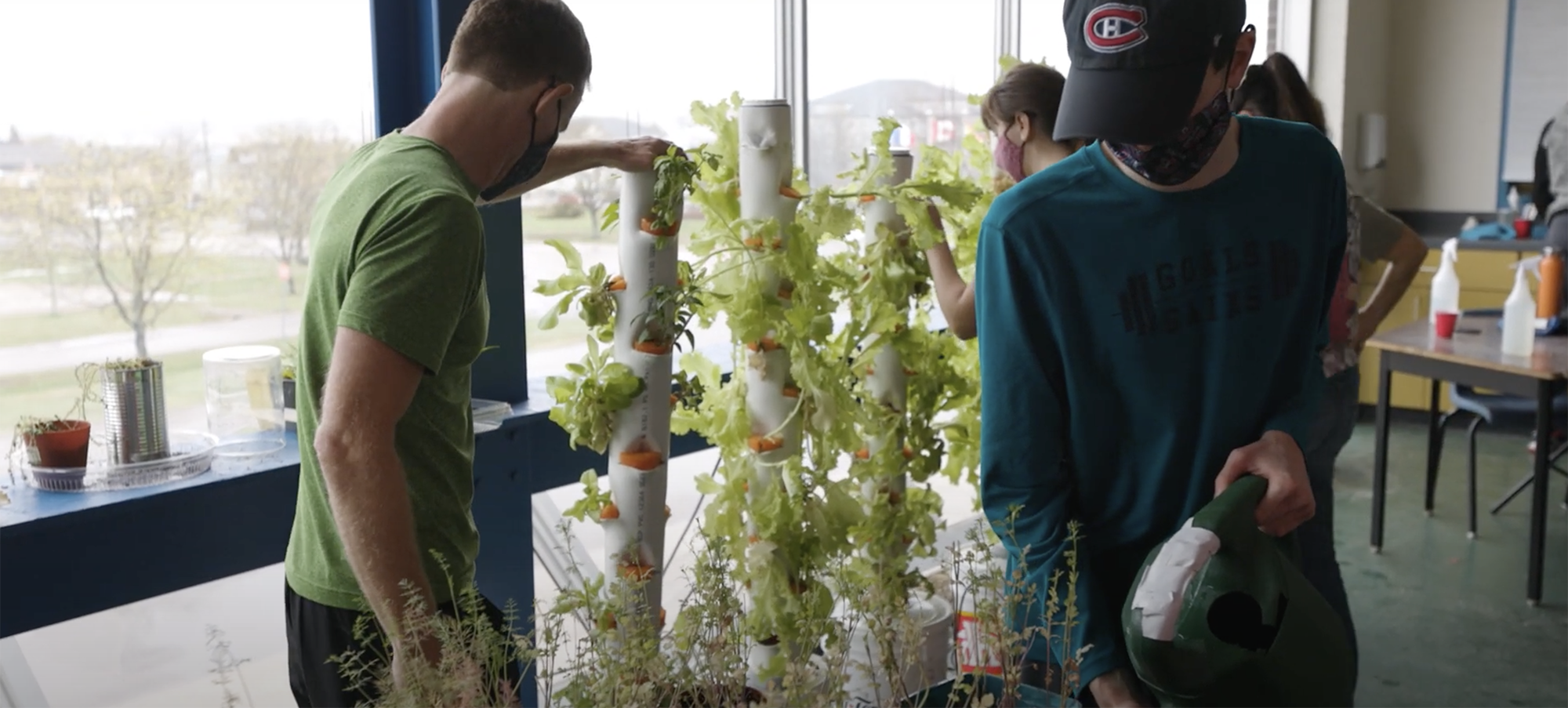
Expected costs
The initial cost of introducing a hydroponics system in your classroom can vary largely based on the type of system you choose. Simple systems can be constructed for under $100 using recycled bottles, growing medium, liquid minerals, a pH test kit and natural light. A basic hydroponics kit will retail for about $400 and the cost will increase depending on size and complexity of the kit. The resources below will help provide you with examples of simple DIY systems as well as systems that are more complex and will require an upfront cost to purchase.
Once your system is in place, you’ll need to budget for on-going costs, though these tend to be relatively low. It is estimated that a year of hydroponics in the classroom can be sustained with less than $100.
Hydroponics systems do not use soil, the system relies on a growing medium to support plants’ root systems, and liquid nutrients so they can grow. Over time, these two essential items will need to be replenished. Of course, like with any gardening, you need to budget for new seeds or plan for seed saving activities.
Green Our Planet Introductory Webinar
Farm to Cafeteria Canada has partnered with Green our Planet to offer their expertise to teachers across Canada.
In this 10-min, pre-recorded webinar, you’ll learn:
- Who is Green our Planet?
- What is hydroponics?
- Hydroponics resources available to you
- Demonstration of two simple hydroponics system
More GreenOur Planet resources are listed at the end of this article.
Examples of Schools
This post has been developed by our regional partners in New Brunswick and in that province, many schools have started to experiment with hydroponics in the classroom. Here are two examples of such projects:
École Mathieu Martin
Students at Ecole Mathieu-Martin in Dieppe, NB built their own vertical garden towers using PVC pipes. They grow lettuce, basil, and other herbs during the school year. This project was made possible with funding from Place Aux Compétences and support from École Mathieu-Martin direction.
Listen to teacher Armand Melanson as he explains the process and benefits of the project:
Gretna Green School
Gretna Green teacher Christine Levesque-Martin received a Farm to School: Canada Digs In grant in 2020. With these funds they’ve purchased a hydroponics system and are growing vegetables in their cafeteria.
Listen to Christine as she explains their project and student learning experiences:
What is Aquaponics?

Another form of agriculture that can be used in schools is aquaponics. Aquaponics combines raising fish and plants together in a balanced ecosystem. In aquaponics, the nutrient-rich water from raising fish provides a natural fertilizer for the plants and the plants help to purify the water for the fish. It is an innovative and sustainable growing method that increases food security and decreases environmental degradation. Aquaponics have the potential to engage students while building and creating initiatives in science, technology, mathematics, and language arts.
For more information, check out this document: Aquaponics in the Classroom


